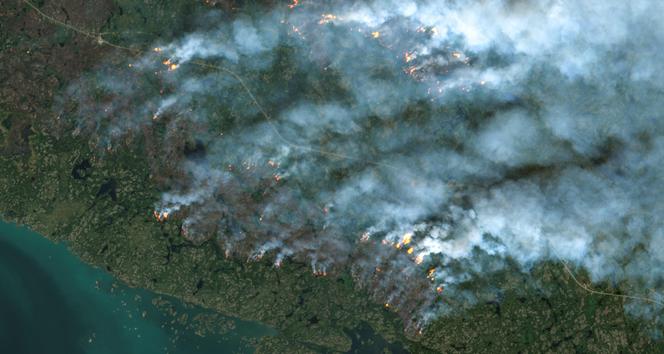


At 7:30 pm local time on Wednesday, August 16, the "evacuation alert" – which had been in effect for the past three days – went one step further, becoming an "evacuation order." "Unfortunately, our wildfire situation has taken another turn for the worst with a fire burning west of Yellowknife now representing a real threat to the city," said Shane Thompson, minister of environment and climate change for the Northwest Territories, in a press conference aimed at the 20,000 or so residents of the territorial capital in Canada's far north. "The city is not in immediate danger (...) [but] without rain, it is possible it [the blaze] will reach the city outskirts by the weekend," he said, urging residents to leave their homes by noon on Friday, August 18.
The flames from one of the 236 wildfires burning in this territory – which is more than twice the size of France – were at the time only about 15 kilometers from the city. "The territories have never seen anything like this before in terms of wildfire ... it’s an unimaginable situation for so many," said Mike Westwick, spokesman for the firefighting agency. "We’re doing absolutely everything we can first and foremost to slow the growth [of the fire] and prevent that fire from making it to Yellowknife,"
Within hours of dusk, through thick smoke and under a sky still tinted red, hundreds of vehicles set off on Highway 3 – the only highway leading south toward the neighboring state of Alberta. Allan Gofenko, a Canadian public radio station employee, was one of those who took to the highway, which was surrounded by several raging blazes. On CBC North, he explained how it took him five hours to cover the first 100 kilometers of his long journey.
Along the way, traffic was regularly cut off due to firefighting efforts including building barriers, moving heavy vehicles and spraying fire retardants. "At one point, there were seven firefighting planes flying overhead." Gofenko fled through the hamlet of Enterprise, near the Alberta border, which was almost completely destroyed by the flames. "I think there's seven or eight houses left and three or four businesses. It's painful," said Michael St Amour, the mayor of Enterprise, bitterly.
The very limited infrastructure of this immense and massively forested territory – whose road network consists of just 10 roads that are open all year round – means that some of its estimated 45,000 inhabitants are very isolated in their villages, which are sometimes separated by several hundred kilometers. In just a few days, local authorities had to set up what they called the largest airlift in the territory's history to evacuate the population.
You have 47.5% of this article left to read. The rest is for subscribers only.
